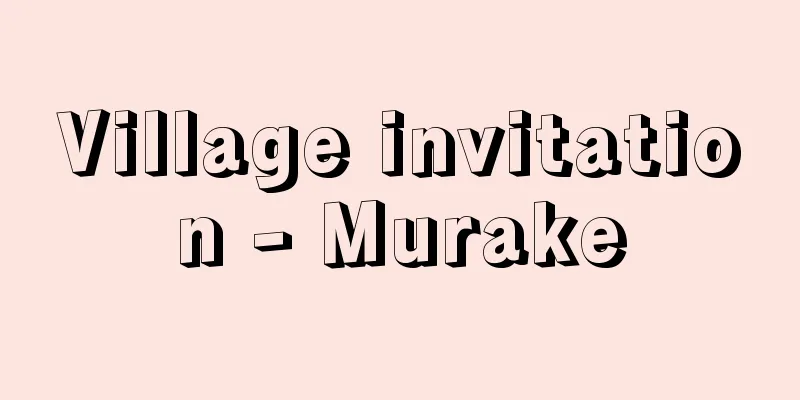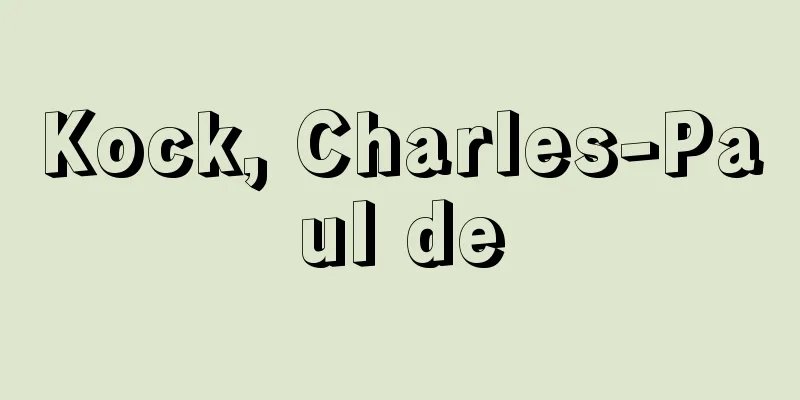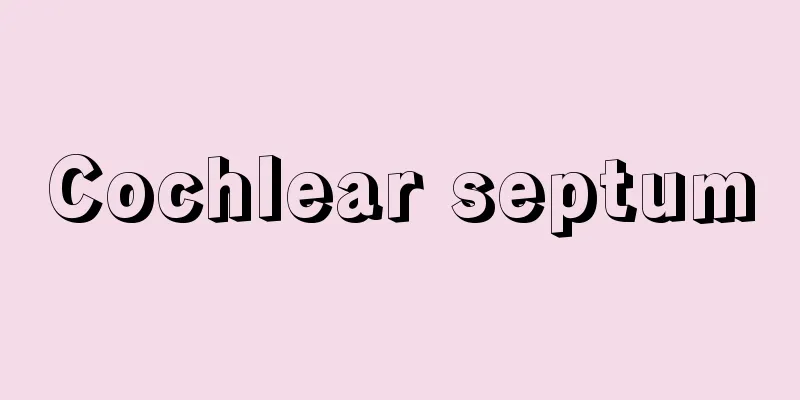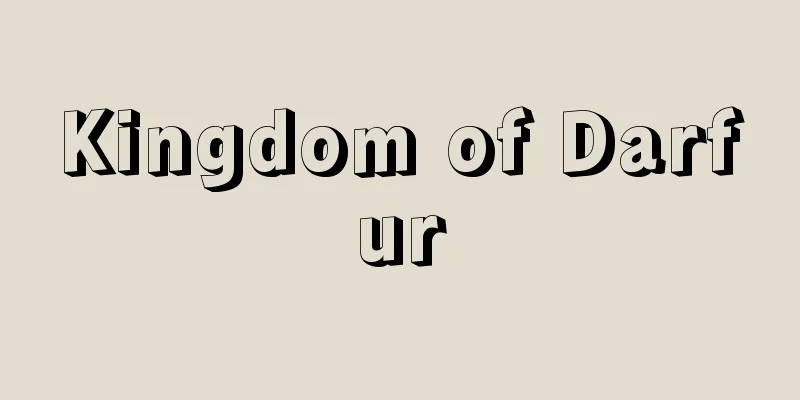Usa Shrine

|
It is located in Minamiusa, Usa City, Oita Prefecture. It corresponds to Hachiman Daibosatsu Usamiya, Himejinja, and Otarashihime no Byo Shrine, which are Engishiki-nai Taisha shrines in Usa County, Buzen Province, and enshrines Hachiman Okami (Honda Wake no Mikoto) in the first shrine, Hime Okami in the second shrine, and Empress Jingu (Oobihime) in the third shrine. Hachiman Okami is said to be Emperor Ojin, and Empress Jingu is the birth mother of Emperor Ojin. Hime Okami is the consort of Hachiman Okami, but there is also a theory that Hime Okami is the clan deity of the Usa clan. The name of the shrine is derived from the place name of Usa, and was established in 1873 (Meiji 6). There are many theories about the divine virtues and origins of Hachiman-no-Okami before he was identified with Emperor Ojin. "Hachiman" was originally read as "Yahata," but after he was given the title of bodhisattva, it was also read as "Hachiman." The story of Empress Jingu's military expedition to Silla (the Three Kingdoms of Korea), recorded in the Kojiki and Nihonshoki, is the basis of faith in Hachiman-no-Okami, and while he is revered as a war god and a protector of the nation, he is also unique in that he can easily be assimilated with foreign Buddhism. Notable examples include the offering of tributes from Silla, the divine assistance in the construction of the Great Buddha of Todaiji Temple, and the oracle that prevented Dokyo's tyranny by Wake no Kiyomaro. Furthermore, when the emperor ascended to the throne or when an important event occurred for the nation, the "Usa Wake Messenger" was dispatched. In the early Heian period, Iwashimizu Hachimangu Shrine was established in Kyoto, and in the early Kamakura period, Tsurugaoka Hachimangu Shrine was established in Kamakura. Hachiman was revered as the "two main shrines" along with Ise Grand Shrine, and was also revered as the guardian deity of the samurai class. For this reason, Hachiman was enshrined all over the country, and is currently the head shrine of approximately 24,000 Hachiman shrines. This is due in part to the fact that Hachiman's divine will is revealed through oracles. Formerly a government-sponsored shrine. The annual festival (Usa Festival) is held on March 18th. The main Shinto rituals are the Chinpei Festival (Shinkyo-e) on February 13th, the Shinko Festival from July 31st to August 2nd, and the Mid-Autumn Festival (Hojo-e) from October 9th to 11th. The main hall is considered the prototype of the Hachiman-zukuri style and is a designated national treasure, while the grounds are a designated national historic site. Shrine treasures include the sword in a white sheath donated by Prince Kaneyoshi, the Shogun of the Western Expedition, an ancient mirror with the Tenpuku inscription, and a bronze bell (Korean bell), all designated as Important Cultural Properties. Other treasures include the Usa Daikagami, the Usa Hachiman Shrine Oracle Collection, documents from Itozu, Nagahiro, and Oyamada, and old maps of the grounds. [Masahiko Ninomiya] Usa Hachiman Shrine territoryGenerally, the territories of powerful shrines are divided into Shingun (divine district), Fuko (vessels), and Shoen (manors), but in the case of Usa Hachiman Shrine, there is no clear historical evidence to show that Shingun existed. The first Fuko was given in 740 (Tenpyo 12), when 20 households were given as a reward for praying for the quelling of the rebellion of Fujiwara Hirotsugu. The Shoku Nihongi (Chronicles of Japan Continued) records that in 750 (Tenpyo Shoho 2), 800 households and 80 cho of land were donated to Hachiman-no-Okami as a reward for his contribution to the construction of the Great Buddha, and 600 households and 60 cho of land were donated to Hime-no-kami. After that, the fuko were repeatedly returned and restored, but in 798 (Enryaku 17), the "Shinsho Kakuchokufusho" lists 1,410 fuko as fuko of Usa Hachimangu Shrine. In the Heian period, these fuko were gradually turned into manors and came to be called "Jigo Sankasho." The ten villages were the Fube, Mukun, Takaie, Karashima, Kuzuhara, Ooe, Nonaka in Shimoge County, and Aki, Musashi, and Kunawa in Kunisaki County, Bungo Province, while the three manors were Ogata Manor in Bungo Province, Miyazaki Manor, and Usuki Manor in Hyuga Province. In addition to the manors that were descended from the above manors, a group of manors called the "Hongosho Juhachisho" (18 manors of the main manor) was established as Ichiensho from the mid-Heian period onwards. In addition, there were the "Kuniguni Sanzai Tsunemi Myoden" (fields scattered throughout the country) that were developed and donated by the feudal lords of each region, and if these were added together, the Usa Shrine territory consisted of over 120 locations throughout Kyushu. After the Nanboku-cho period, these shrine territories became mere names as samurai seized them, and eventually disappeared with the establishment of the kokudaka system following the Taiko land survey. However, in 1646 (Shoho 3), Tokugawa Iemitsu guaranteed 1,000 koku in a red seal letter, and the shrine territory of the early modern period was established. [Makoto Ebisawa] "A Study of the History of Hachiman Faith, by Nakano Hatano, Volumes 1 and 2 (Expanded Edition, 1975, Yoshikawa Kobunkan)" [Reference] |Main hall (national treasure). Nationally designated historic site. Usa City, Oita Prefecture . ©Oita Tourism Association . Usa Shrine Usa City, Oita Prefecture © Tourism Oita Public Interest Incorporated Association "> Usa Shrine Mid-Autumn Festival (Hojoe) Source: Shogakukan Encyclopedia Nipponica About Encyclopedia Nipponica Information | Legend |
|
大分県宇佐市大字南宇佐に鎮座。豊前(ぶぜん)国宇佐郡の延喜式内(えんぎしきない)大社である八幡大菩薩宇佐宮(はちまんだいぼさつうさのみや)、比売神社(ひめのじんじゃ)、大帯姫廟(おおたらしひめのびょう)神社に符合するもので、第一殿に八幡大神(おおかみ)(誉田別尊(ほんだわけのみこと))、第二殿に比売大神(ひめおおかみ)、第三殿に神功(じんぐう)皇后(大帯姫)を祀(まつ)る。八幡大神は応神(おうじん)天皇とされ、神功皇后は応神天皇の生母である。比売大神は八幡大神の配偶神であるが、宇佐氏の氏神とする説もある。社名は宇佐の地名を冠したもので、1873年(明治6)に定められた。八幡大神の神徳、由来については、応神天皇に比定されるまでは諸説多く一定しない。「八幡」も当初は「やはた」と読み、菩薩号を与えられてからは「はちまん」とも読んだ。記紀などに記される神功皇后の新羅(しらぎ)(三韓(さんかん))出兵の物語が八幡大神への信仰の基底となり、武神、鎮護国家神として崇敬される一方、外来の仏教とも容易に習合しうる特異性がある。たとえば新羅の朝貢物の奉献、東大寺大仏造立への神助、道鏡の専横を和気清麻呂(わけのきよまろ)が阻止した神託などが著例といえよう。そして天皇の即位、国家に大事があるときには「宇佐和気使(わけつかい)」が差遣されることになった。平安初期には京都に石清水八幡宮(いわしみずはちまんぐう)、鎌倉初期には鎌倉に鶴岡八幡宮(つるがおかはちまんぐう)が創祀(そうし)され、八幡大神は伊勢(いせ)の神宮とともに「二所宗廟(にしょのそうびょう)」と仰がれ、また武士階級の守護神として崇敬されるに至った。そのため八幡大神は全国各地に祀られ、現在約2万4000社の八幡宮の総本社である。これは八幡大神の神意は託宣によって示されるという特色にも起因する。旧官幣大社。例祭(宇佐祭)は3月18日。2月13日の鎮疫祭(心経会(しんぎょうえ))、7月31~8月2日の神幸祭、10月9~11日の仲秋祭(放生会(ほうじょうえ))がおもな神事。本殿は八幡造の祖型とされ国宝に、境内は国の史跡に指定されている。社宝としては征西将軍懐良(かねよし)親王奉納の白鞘(しらさや)入剣、天復銘の古鏡、銅鐘(朝鮮鐘)などが重要文化財に指定されているほか、宇佐大鏡、『宇佐八幡宮託宣集』をはじめ、到津(いとうづ)・永弘(ながひろ)・小山田(おやまだ)文書、境内古図があげられる。 [二宮正彦] 宇佐八幡宮領一般に有力神社領は神郡(しんぐん)、封戸(ふこ)、荘園(しょうえん)に区分されるが、宇佐八幡宮の場合、神郡が存在したことを示す明確な史料はない。封戸を初めて給されたのは740年(天平12)のことで、藤原広嗣(ひろつぐ)の乱平定の祈請(きせい)に対する報賽(ほうさい)として20戸が与えられた。『続日本紀(しょくにほんぎ)』には750年(天平勝宝2)、大仏造立助成の功により八幡大神に封800戸、位田80町、比売(ひめ)神に封600戸、位田60町が寄進されたことが記されている。その後、封戸の返納、回復を繰り返したが、『新抄格勅符抄(しんしょうきゃくちょくふしょう)』には798年(延暦17)、宇佐八幡宮の封戸として1410戸があげられている。平安時代に入ると、これらの封戸は徐々に荘園化し、「十郷三箇荘」とよばれるようになった。十郷とは豊前(ぶぜん)国宇佐郡の封戸(ふべ)、向野(むくの)、高家(たけい)、辛島(からしま)、葛原(くずはら)、下毛(しもげ)郡の大家(おおえ)、野仲(のなか)、豊後(ぶんご)国国東(くにさき)郡の安岐(あき)、武蔵(むさし)、来縄(くなわ)の各郷で、三箇荘とは豊後国緒方(おがた)荘と日向(ひゅうが)国の宮崎(みやざき)荘、臼杵(うすき)荘である。以上の封戸の系譜を引く荘園のほかに、平安中期以降、「本御荘十八箇所」とよばれる荘園群が一円荘(いちえんしょう)として成立した。このほか各地域の領主が開発し寄進した「国々散在常見名田(くにぐにさんざいつねみみょうでん)」があり、これらを合計すると宇佐宮領は九州一円に120か所余り分布していたことになる。これらの社領は南北朝期以降、武士の押領(おうりょう)により有名無実のものとなり、太閤(たいこう)検地による石高(こくだか)制の成立によって最終的に消滅したが、1646年(正保3)徳川家光(いえみつ)の朱印状により1000石が保証され、近世の社領が確立した。 [海老澤衷] 『中野幡能著『八幡信仰史の研究』上下(増補版・1975・吉川弘文館)』 [参照項目] |本殿(国宝)。国指定史跡 大分県宇佐市©公益社団法人ツーリズムおおいた"> 宇佐神宮 大分県宇佐市©公益社団法人ツーリズムおおいた"> 宇佐神宮仲秋祭(放生会) 出典 小学館 日本大百科全書(ニッポニカ)日本大百科全書(ニッポニカ)について 情報 | 凡例 |
>>: Ojak-pi (English: Ojak-pi)
Recommend
Sridhara (English spelling)
...Pātā is a collection of completely mechanical ...
Hanga Roa (English spelling) HangaRoa
…The population is about 2,000 (1988), of which a...
Kerensky - Aleksandr Fyodorovich Kerensky
Russian politician and Prime Minister of the Prov...
Uncle
...Nephews and nieces are a type of collateral re...
Kinsei Mono no Hon Edo Sakushaburui
An encyclopedia of Edo literature authors written ...
Parnasse contemporary (English)
…This is a translation of the term l'école pa...
Kusano
Ichibacho is a former post town in the eastern pa...
Leather hand - Kawate
…These Imperial estates were inherited as manor g...
The Economist
Published every Saturday in the UK, it is the wor...
Brachyponera chinensis (large needle ant)
An insect of the family Formicidae in the order Hy...
Meistersang
...It is a term used to refer to poets and singer...
Crataegus
...A deciduous shrub of the Rosaceae family nativ...
Alfalfa - alfalfa (English spelling)
A perennial plant of the legume family (APG class...
Motomego - Motomego
One of the songs of Azuma Asobi . Along with Surug...
One dream - Ichimu
〘 noun 〙 A single dream. Also, the short time it t...









